Scanning the shelves
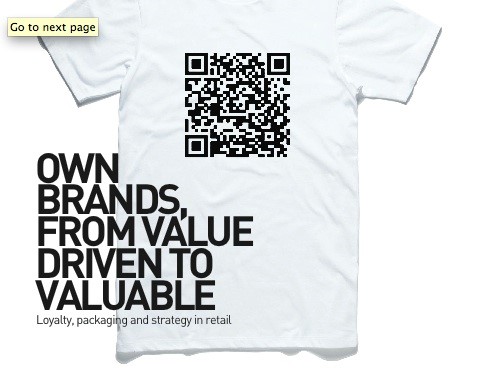
Competitive pricing is no longer the only value own brands add to retailers. They can build reputation, loyalty and sales, but their design and management requires a considered approach and careful research into audience and category behaviours. Brittany Golob analyses the own brand marketplace
American grocer Trader Joe’s issues a statement with its private label – a brand under which most of its 4,000 or so products fall – that its branded items adhere to high standards of quality, taste, health and low prices. Trader Joe’s products are intended to appeal to the food- conscious consumer without the price tag that comes with more expensive brands or luxury supermarkets.
As a result, Trader Joe’s sold $1,734 per square foot in 2014 and grew to 457 stores nationwide in 2015, from 344 in 2010. Trader Joe’s positioning and products also earned it the number 14 ranking on M&C Saatchi’s 2013 ‘Top 20 desirable brands’ list.
It is not the only supermarket to profit financially and in terms of brand loyalty from an own brand, but in the past, own brands were established solely to compete on price. British grocer Sainsbury’s says in its archive that its founders launched an own brand in 1882 to, “Find a way of providing goods cheaper than other retailers, without compromising the quality.” However, price is no longer the point. What counts is the brand itself.
This corresponds to a rise in shoppers preferring the own brand to the national brand. Peter Hathaway, general manager for marketing at Woolworths Food Company says Australia's own brands have a low market share, compared to the UK. “As a result, we are less inclined to develop derivative, ‘me-too’ products in our own brand ranges, focussing more on delivering greater quality and nimbly meeting customer needs based on our own customer insights – all while keeping the key proposition of delivering exceptional value for money,” he adds.
Having an own brand offers well-documented benefits. It can be a boon to business financially and reputationally. However, how companies in different places around the world build, manage and implement these brands varies widely. Considerations must take into account packaging design, category, audience, fit with the corporate brand and perception. Successfully achieving an effective own brand requires a deft hand and a keen understanding of audience.
Shepherding a brand to the point of Trader Joe’s success is no easy thing though and risks are apparent throughout the process. Tesco learned that lesson this March with the launch of seven new own brands for its fruit and vegetables, meat and poultry ranges in the UK. Its British-sounding farm brands names turned out to be fabrications. Tesco managed to understand that shoppers wanted to buy homegrown products, but it missed the fact that authenticity and transparent communications lay at the root of that desire. That gaffe contributed to a £12 drop in share price.
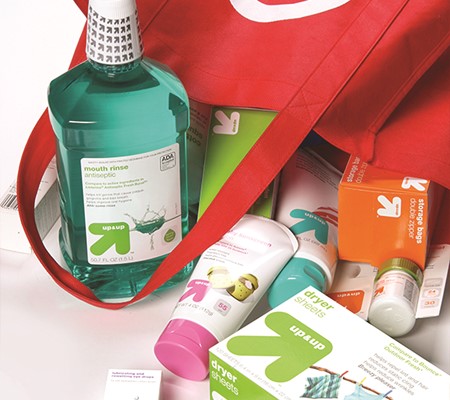
“YOU HAVE TO BE VERY ADEPT AND SKILLED AT WRITING GUIDELINES FOR THE PACKAGING. NO MATTER WHAT THE CATEGORY YOU’RE DESIGNING IN, YOU HAVE TO FIRST LOOK AT HOW COLOUR, SCALE OF PHOTOGRAPHY, TYPOGRAPHY AND GRAPHICS ARE USED IN THAT CATEGORY”
Leland Maschmeyer, chief creative and strategy officer at New York brand agency Collins, likens this to Kashi. The cereal was launched as a healthy, natural option and positioned as a whole food product. When consumers discovered it was owned by the Kellogg Company and used predominantly GMO grains, the brand suffered. He says parent brands should take the time to understand their audiences and the category in which the brand will sit, before making any naming or design decisions, “First look at what the category is doing, deconstruct it and then put it through the lens of these brand guidelines to then apply it. So when the own brands sit on the self next to the national competitors, they look like an equal or better than product. That’s super challenging and there’s no rule that can be written for that, all you can do is write principles for it.”
Major American department store Target found that its 265 plus own brands were losing money and failing to retain loyalty. It commissioned global brand consultancy Wolff Olins to reexamine its own brand strategy and launch the new brands in 2009, including the now-prominent Up & Up label.
Target was competing on price, but its brand strategy was virtually nonexistent, says Sam Wilson, global principal at Wolff Olins. “It was completely out of control and driven by the merchant thinking something would sell versus marketing understanding what kind of people they were trying to bring into the store and how they were building the brand,” she says. The goal was to create unified strategy and change Target’s management of its own brands from haphazard to intentional.
She and the team at Wolff Olins worked with Target on a comprehensive set of research to understand why there was low brand awareness and where they could consolidate brands.
This step requires an understanding of category. Maschmeyer says companies can falter with regards to categories because their own brands do not have credibility in that category. For example, the private label for pet food may not be suitable for vitamins and health food. “Each of the categories needs to have essentially their own brand,” he says. However, there also needs to be a sense of consistency either with regards to naming or packaging and design to communicate brand values to the customer as well as its relationship to the retailer.
Australia’s favourite grocer, Woolworths is going through this process now. Its longstanding Homebrand label is being discontinued and a new range, dubbed Essentials, will be coming to market. This is only one brand of many in Woolworths’ stable, but it is a core food and drink label. Hathaway says, “The phasing out of Homebrand and the introduction of the new Essentials range reflects the beginning of a holistic and concerted drive to improve the value, quality and customer propositions of our entire brand portfolio.”
The decision is partially due to Homebrand’s positioning as a value range. For 33 years it has been offering competitive price points and everyday value, but Hathaway notes, “Homebrand to Essentials was simply a result of listening to our customers. The key challenge when undertaking this was to inject positivity and personality onto the range without creating additional costs (a little creativity and care doesn’t cost the earth), while ensuring that the consolidated value range was as easy for customers to identify on shelf and shop as Homebrand was. Being wise enough to buy value should be something customers feel good about and it should be easy to do.”
For Target, a similar repositioning prompted the changes in 2008. Wilson says Target’s distinctive corporate brand values were understood by consumers and, to some extent, internally. But, the company had to go through a bit of a cultural shift in terms of marketing and design to connect its own brands with the corporate brand. That hard work led to a better integration between merchandising teams and marketing, as well as the growth of Target’s in-house design function. Wilson says, “The thing that’s great about working with Target as a master brand is that it has a really clear point of view. You know how it would deploy its brands against a specific category and that’s something that has made Up & Up a successful brand because it has that Target-y spirit to it.”
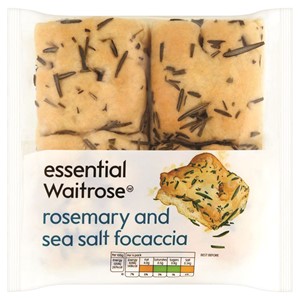
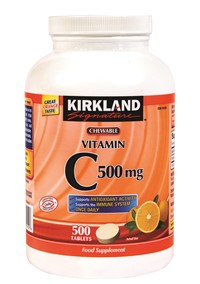
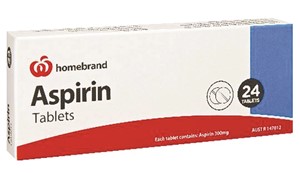
Similarly, Waitrose Essentials in the UK is one of the nation’s most revered own brands because it has helped to reposition the company away from being perceived as ‘upmarket.’ The Essentials brand, introduced in 2013, is competitive in terms of price, but is decidedly not positioned as a budget range, according to then managing director Mark Price. It was designed to highlight Waitrose’s diverse range of products on offer and to help the parent brand shift to be seen as a more ‘everyday’ option for more people. It is now worth over £1bn in its own right.
Waitrose Essentials uses a unified design system across all categories, somewhat of a rarity among successful own brands. Design and packaging are key considerations when developing an own brand, particularly when consolidating brands. CBX, a New York-based brand agency, developed six labels – from over 60 existing brands – for Walgreens that were suited to their categories. Similarly, its work for chemist Duane Reade focuses on audience and category while using creative packaging techniques, doubling private label sales. Even more starkly, it cut American warehouse retailer BJ’s Wholesale’s own brands down to two, one for food brands and one for non-food brands.
In the case of Target, Wolff Olins had to consider the design tropes, signifiers and language for each of its new brands’ categories. Up & Up, the core product brand, was thus designed to be incredibly flexible. Its predecessor, the Target brand, simply slapped its bullseye logo onto every product.
Up & Up was devised to use a big, easily- identifiable arrow on every package, but to be flexible enough to accommodate other communications. In pharmaceuticals, for example, legal requirements dictate that certain information must be included on pack, while beauty products are less stringent.
“The key is to have a really strong system that’s flexible, but also has aspects that are very consistent. That’s why the arrow was so helpful, because it’s unmissable,” Wilson says. “You have to be able to adapt that basic approach to a lot of different tangible variations. Once you have that core system set up it becomes a lot easier to extend it across lots of different things.” It doesn’t hurt that the Up & Up arrow links back to Target’s master brand bullseye logo with aplomb.
Hathaway’s team is conscious of this as it begins to roll out the Essentials range. “Essentials products will do the job required and always deliver pure value for money in everyday essential products. Each Essentials product must deliver to that truth. The brand and pack simply amplifies that truth,” he says. “Then it’s a case of discipline to maintain that truth, by questioning any
temptation to ‘improve’ the brand execution during a roll-out across categories.”
Maschmeyer says brand guidelines are essential to the development of own brand packaging. “You have to be very adept and skilled at writing guidelines for the packaging. No matter what the category you’re designing in, you have to first look at how colour, scale of photography, typography and graphics are used in that category and then you have to use the brand guidelines in the best way.”
For own brands, one challenge that usually plagues rebrand and repackaging projects is heritage. Most of them are new or, like Up & Up and Woolworths Essentials, entirely re-envisioned, not brand evolutions. Thus, what designers don’t have to account for is any legacy packaging, logos and icons or design styles, freeing the pack for new and creative work.
Better design can enhance the reputation of the line itself and lead to brand loyalty with the retailer more broadly. Maschmeyer says, “There are retailers who pride themselves on their own brand because sometimes their own brands are billion dollar lines. They are staples in peoples cabinets, they are the reason people come to the store.”
Own brands have power. Wilson says that if companies recognise that power, they can benefit from the enhanced connection between the brand and its audiences. That’s just good business.












